24/7 Valencia:Tell us something about your background and education.
Dolores García: I was born in the 1960s in Melilla, a Spanish city in North Africa. It is a small, cosmopolitan city that is located off the coast of Malaga and Granada. It has been Spanish for more than 500 years, at the request of the Jews and Muslims to the Catholic Monarchs, the same ones who had expelled them from the Peninsula three years before, in 1492. When they left, they settled on the African coast in what were the ruins of the ancient Roman city Flavia, famous for its honey, the favourite of the Emperor Tiberius. This is why it was known by the nickname of mellita, which in Latin means “honey-sweet”. Since then, she has not stopped being Spanish for a single day.
I was born in this small Mediterranean city, with the largest concentration of modernist buildings after Barcelona and it is a city where four cultures live together peacefully: the Christian, the Muslim, the Jewish and the Hindu. It has made a deep mark on me and, as time goes by, that has becomes clearer too. It offered me the opportunity to grow up among people who are different because of their language, ways of dressing, ways of expressing their spirituality and their cuisine. In short, a different way of understanding life without colliding with each other. It gave me a clear view of others, without prejudice, open to the fact that differences enrich us and with the certainty that mutual respect is the basis of understanding.
I consider it a privilege to have been born in that crossroads between East and West, in the African land where you will find Melilla, and to have spent there the first nine years of my life. I was educated in a private school in Melilla, the Liceo Español, where I received a secular education, despite the fact that it was during the dictatorship of General Franco, and where I learned songs in other languages of Spain such as Galician and Valencian. It was curious that, when my family and I moved to Valencia, those songs in Valencian were unknown to my new schoolmates because the use of the local language was forbidden.
After studying the Bachillerato, I found myself somewhat disorientated. I ended up taking an exam to enter two ministries and I passed both tests. I chose to enter the Administration of Justice, where I currently work and I also studied several courses in Law. I realized that i no longer wanted to spend my scarce free time with a job, the house, a husband and two children. I had been seduced by living words, the art of storytelling.
24/7 Valencia: What interested you in writing and history?
Actually, what always interested me was reading. Since I was very young, my father encouraged this hobby by buying me comic books and stories… and I devoured them. Then came the classic novels for teenagers. I was a great reader but I never would have imagined myself writing a novel. But it all happened in the most unexpected way. One day, a book fell into my hands and I was walking home. It was a collection of biographies of famous people. Among them was that of Leonardo da Vinci. I knew only what they explained in art history classes about him. I began to read it and I was struck by several issues in his life and work that were enigmatic to me; and I wanted to know more and the why’s too.
The more I investigated, the more intrigued and passionate I became. It came to a point where a puzzle of amazing and unexpected information began to take shape and click inside me, to the point that I was developing and writing about it. So, it wasn’t a decision to write a story that pushed me, I had no choice.
Maybe with the first novel it’s like with first giving birth, it’s much more intense because you have to open a channel. With the following stories, it happened in a similar way. It’s always a story that grabs me, that makes me feel love for its characters, even the most evil ones. From that “love” comes the energy to make them into versatile characters in my imagination and the strength to transfer them to others through writing. Without love for my characters, I cannot write literature. It would only be a chronicle.
If the story I’m going to tell needs a historical context, I try and document it thoroughly to that end. But not necessarily all my stories are and will be about historical characters. In fact, in the case of The Queen of Sugar, the main characters are not historical but the secondary characters and the context are.
What is true is that in the past I find elements of connection with our present that I like to reveal in fictional stories, and that easily transport the reader from one time to another, allowing him or her to live other possible lives.
24/7 Valencia: Could you tell us more about your book ‘The Secret of Mona Lisa’?
My curiosity to discover what motivated Leonardo to agree to make a portrait of Mona Lisa that led me to collect information that eventually became the novel. It was tremendously strange, among many other things, that he agreed to paint the portrait of a silk merchant’s wife when he had turned down orders from the Duchess of Mantua and the King of France. Nor was it normal for him not to be paid for it and never to part with it during his lifetime.
This novel helped me to discover that his achievements in perspective and optics had been applied to the portrait of Mona Lisa, making it the first and only painting that can be seen with a three-dimensional effect, with a relief effect, in his own words, and without any apparatus; something unknown throughout the world until the publication of the novel and the successive essays that I have written. But, above all, this novel helped me to discover him. Without a doubt, ‘Mona Lisa’ is his best and most exquisite work.
The curious thing about this novel is that you start reading out of curiosity or fascination with Leonardo, but when you get into the reading, the personality of Lisa Gherardini, Mona Lisa, captivates and surprises.
24/7 Valencia: What inspired your book ‘The Rebellion of Penelope’?
It is a contemporary story, of normal men and women with emotional conflicts based on real events, some of my own experiences and those I have learned from in my friendships and also through my work in a court. In Penelope’s rebellion I portray the role of moral control and coercion that the social environment exerts on women, especially in small towns and cities. And how this repression of women’s freedom is exercised in a more virulent way by women themselves. Penelope breaks moulds with her drastic decision by rebelling against a life that does not make her happy; but it will not be enough: happiness can only come from self-knowledge and full acceptance. A decision that will have collateral effects on her environment and will serve as a rebuke to inspector Santiago Ramirez, who lives a grey existence because he feels guilty about his ex-wife’s addictions.
24/7 Valencia: Did your novel ‘The Sugar Queen’ become a TV series?
With this novel I tried to do justice both to my hometown, Melilla, to make known its beauty and its importance in the recent history of Spain and Europe; to all the anonymous people, whom Spain has forgotten, who gave their lives to defend my grandparents when they were children; and to members of my family who deserve to have their history known and to repair injustices of the past.
I’m afraid it allegedly “inspired” the Antena 3 series “Times of War”. At least that’s the opinion of many readers of “La Reina del Azúcar”, who have let me know via social media. The resemblance is more than reasonable and the parallels become very strong in the dialogue of some scenes. Maybe it has something to do with the fact that in March 2015, after the presentation of the novel in La Casa del Libro in Gran Vía, Madrid, my editor and I, along with two other people who accompanied us, met in a restaurant in Gran Vía with a director of a production company from Antena 3. The purpose of the meeting was to give her a copy of the novel so that they could study the possibility of making it a series. My editor told her when she gave it to him: “You are going to fall in love with this story. You’ll see what an interesting series comes out of it.” After two years, without any response from my editor or me, a friend told me that they were announcing a series on Antena 3 that looked like my novel. The rest, you know…
The truth is that the readers tell me that the series has disappointed them, and that they miss the parts that have been cut out of the novel: the intrigue and the suspense of the search for the Treaty of Limits to avoid the war between Spain and Morocco in the present time. Also, they miss the historical characters like Abd-el-Krim. Above all, the dramatic story of love, personality and charisma of Inés Belmonte and her family saga and all the glamour of a cosmopolitan Melilla and in full construction of a modernist city in the image and likeness of Barcelona.
So, as they left out the best, it can still be a great series that keeps the audience pending with the troubles and achievements of a Spanish-French bourgeoisie who gets caught up in the wars of the early 20th century in North Africa and manages to become the most powerful industrialist in the city: the Queen of Sugar.
24/7 Valencia: Could you tell us more about your published essays, including the work “Valencia and its silk art in La Gioconda”?
The documentation work I did before writing my first novel, ‘El secreto de Monna Lisa’, also served to open new lines of research on portraiture. One of them led me to discover that the painting ‘La Gioconda’ at the Louvre, by Leonardo da Vinci, had been made using a technique that allows it to be seen in relief, as he explained in his manuscripts. Something that had not been studied or discovered until now. The research and its explanation are contained in my essay La Gioconda: a portrait “in relief”. The essay Leonardo, “in relief” also includes this research and the human, artistic and scientific evolution that led Da Vinci to want to overcome all the perspective techniques known in his time.
In another essay, ‘The Keys To The Mona Lisa’, I include, among other topics, the investigation of the hypothesis of the location in the painting of a small and discreet self-portrait of Leonardo, camouflaged in a place that is very revealing of the spiritual relationship with the model.
In my last essay, ‘Valencia and its silk art in La Gioconda’, I gather the research that led me to discover that Mona Lisa, the model of the most famous painting in the world, is dressed with exclusive silks woven and dyed in Spain, most probably in Valencia, the silk centre par excellence in the Spain of the XV-XVI centuries. These garments could not have been obtained anywhere else in the world, for the simple reason that the colours, in which the garments are dyed, black, aubergine and tawny yellow, were not possible on silk until 1493 when the Spanish began to bring from America a new dyeing plant unknown in Europe.
In the book I explain how this painting ends up becoming a symbol of cultural globalization and how East, West and America intersect and how the world is such and we know it thanks to the courage, talent and generosity of a Valencian: Luis de Santángel, without whom Columbus’s first expedition in search of new routes to spices and silk would not have been possible.
24/7 Valencia: How do you find Valencia as a place to live and work?
My love for Valencia is well proven but my relationship with it is complicated. On the one hand, I feel at home here and I love its dynamism and beauty. But it’s not a good place for people like me who like and need silence and peace to develop as an artist.
Actually, it’s not Valencia but Spain in general. The problem is that Valencia continues to function in the artistic aspect, and above all in the literary one, with a “provincial” myopia. On the one hand, it is in awe of what is done in Madrid or Barcelona and, on the other, without a vision beyond its regional borders. A recent example: a Valencian publishing house offered to publish my latest essay “Valencia y su arte de la seda en La Gioconda” and made it a condition sine qua non for me to publish it that I remove “La Gioconda” from the title, because “that is not commercial” (sic). No comments. Of course, my response has been a polite but emphatic “No, thanks”.
As for cultural activities, there is a varied offer but it is not a place for the development of artists and even less so for those dedicated to literature. Support is often linked to political issues rather than talent. I know some winners who have been awarded for their political contacts. I miss the clean-cut approach of other countries, usually Anglo-Saxons, where the attitude is to value the talent shown in your work.
24/7 Valencia: What are your future plans?
Basically, to continue writing new novels I have pending and to continue trying to make the exhibition projects I have prepared about Leonardo and La Gioconda come true. I’m hoping to find promoters who are enthusiastic about the project and the public can experience, with their own eyes, how Leonardo achieved a portrait that can be seen in relief. It would be wonderful to be able to do him justice as well.
Interview by 24/7 Valencia team
Related Post
This site uses Akismet to reduce spam. Learn how your comment data is processed.


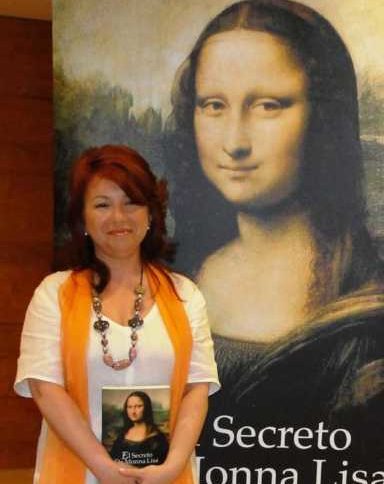
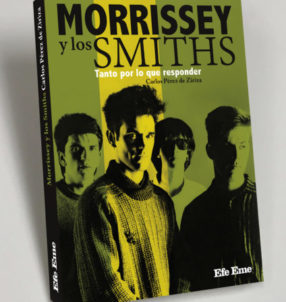
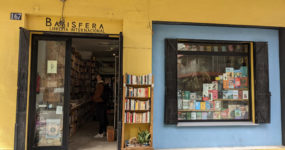
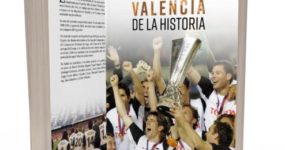
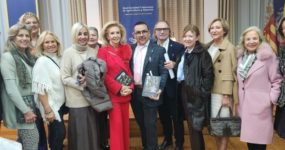
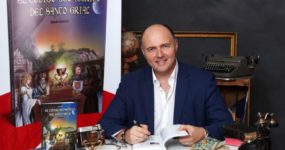

















Leave a comment